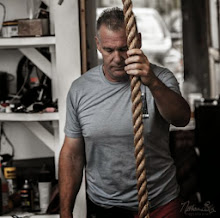Many years ago I was providing a demo of Equine Rolfing, to a number of people, one of which was a reporter for the Boulder Newspaper. During the demo the horse released some manure and me being the smart aleck I am said "Oh, he's having an emotional release". This made it into the article the reporter wrote, which didn't bode well for my reputation. But I can imagine that in some bizarre way their are people who would read this article and think that when this happens during one of their horses sessions that the horse is releasing held emotions.
I am continually asking myself how I know that what I think is helpful is actually helping.
With structural work we are not looking for simple reflexive indicators from the client that our input is having the desired effect. We look for structural changes to indicate that we are on the correct path.
But these structural changes can not be whimsical--as I would suggest measures such as yawning, licking lips...are--they have to be orderly and have a predictable effect on how the body is used. In other words, if we are releasing a shoulder so the thorax can rise--this is something we want for people, horses and dogs--than we should see the effect of this on the arms and legs in humans, the front and rear legs in quadrupeds.
Our system of working has to follow a scientific criteria of : Observable, Measurable and Repeatable.
Observable -- of course we have to be able to observe the change. If we can't somehow "see" it, than we can't really know that it occurred. This "seeing" could be very precise, I flip a light switch and a light comes on. To more inferred, I leave out cheese and mice come and eat it leaving mouse droppings behind. One problem with observation is that it's prone to some corruption from our desire to "see" things that are not connected to the causal agent as connected, i.e. yawning as an indicator of tension release in the musculoskeletal system from our intervention.
Measurable -- we should be able to measure our observable change. I personally think that releasing the axial skeleton from the upper appendicular skeleton--what I call releasing the shoulders--is paramount to freeing the legs to move (front and rear). Unfortunately, "releasing" while observable and measurable. It is not precisely correlated to the change. I would love to be able to say " if you see a x inch change in the shoulder of a horse towards vertical this will increase their stride length by y inches.
Repeatable -- our observations and measures should be repeatable over a large population. If we say we have a particular intervention that has a resultant change associated with it, then this change should be repeatable over a large population. This is why I stay away from what people call "moves" or "techniques" as any thing other than potential tools to a more global structural change.
If you observe a change or response from your clients to some intervention make sure that you can measure and repeat it before you attribute it to something. Otherwise you risk the possibility of looking very foolish.
Friday, January 8, 2010
Subscribe to:
Post Comments (Atom)




No comments:
Post a Comment